git submodule add https://fabrikam-fiber@dev.azure.com/fabrikam-fiber/FabrikamFiberProject/_git/FabrikamFiber FabrikamFiber. In this example, pull requests are validated that target main or releases/* and the branch releases/old* is excluded. Azure DevOps repository trigger not firing, Trigger a pipeline on a monthly basis in Azure DevOps. If you have a repo with a large number of updates and pull requests, this call may fail due to such throttling. Have you excluded the branches or paths to which you pushed your changes? He also rips off an arm to use as a sword. Which was the first Sci-Fi story to predict obnoxious "robo calls"? You can also configure fetch depth by setting the Shallow depth option in the pipeline settings UI. Why did DOS-based Windows require HIMEM.SYS to boot? Find centralized, trusted content and collaborate around the technologies you use most. However, when I create a feature branch from develop and I push the changes for the feature branch, the pipeline is being trigged, even though I haven't created a pull request yet. Currently, we use a service hook that fires when the PR status is changed, hitting a custom Azure Function API, which then determines whether to delete the environment and, if so, deletes it. Azure Pipelines Agents - Azure Pipelines | Microsoft Learn You should keep in mind the following considerations when using Azure Pipelines in a public project when accepting contributions from external sources. Select the Clean setting from the properties of the Get sources task in your pipeline and select one of the following options. If you are using Azure DevOps Server 2020 or newer, you can omit branches to filter on all branches in conjunction with the path filter. You can't currently configure this setting in YAML but you can in the classic editor. Contained in the same project as the Azure Repos Git repo specified above. If you do need to clean the repo (for example to avoid problems caused by residual files from a previous build), your options are below. is resolved to a commit ID and when the agent performs the checkout. YAML pipelines are configured by default with a CI trigger on all branches. See GitHub's documentation. A quick way to determine if the statuses are Check Runs or simple statuses is to look at the "conversation" tab on a GitHub PR. YAML like: variables: - group: "DevInstanceList" - name: InstancesList value: Instance1,Instance2 steps: - $ { { each env in split (variables.InstancesList . Based on your pipeline's type, select the appropriate trigger from the lists below. Are you experiencing a delay in the processing of push or PR events? So you can try to provide the value in the YAML file. For instance, you may have one pipeline to build the docs for your app and another to build the source code. Choose More actions > Validate. Navigate to your Azure DevOps project, select Pipelines > Releases and then select your release pipeline. @DavidMuozTord Do you think that means that this is not an appropriate answer to the question that was asked? What I have to do is, I have 1 branch as below in the azure DevOps respository, Then I create a new branch as dev-C123456, so now I have two branches (dev and dev-C123456). To learn more, see our tips on writing great answers. However, the release pipe still gets triggered, but this time without an artifact (which fails the pipe). azure devops - Pull request trigger is running pipeline for all If the null hypothesis is never really true, is there a point to using a statistical test without a priori power analysis? Based on your pipeline's type, select the appropriate trigger from the lists below. Make edits to your pipeline using Intellisense and the task assistant for guidance. First, create a pipeline for the repository and build it at least once so that its status is posted to GitHub, thereby making GitHub aware of the pipeline's name. Check the syntax for the triggers and make sure that it is accurate. These are the same permissions required when using OAuth above. - Kevin Lu-MSFT May 19, 2020 at 6:09 Ok but if use that then the trigger will run on every validation and not when the PR completes. Configure the Shallow fetch setting. rev2023.5.1.43405. Pull request trigger and Build Validation both trigger the pipeline when the PR starts. In this example the submodule refers to a repo (FabrikamFiber) in the same Azure DevOps organization, but in a different project (FabrikamFiberProject). paths includeExcludeFilters. You may want to label your source code files to enable your team to easily identify which version of each file is included in the completed build. This isn't desirable during automated builds when user interaction isn't possible. And this is part of the Pull Request Build: We have Release pipelines for each of the Source builds, having Pull Request triggers enabled in one of them only, but you can have only one for your master artifacts, so PRs won't be published. Asking for help, clarification, or responding to other answers. If your pipeline does not have path filters, it will be triggered even if there are no changes in the new branch. If the null hypothesis is never really true, is there a point to using a statistical test without a priori power analysis? Folder's list view has different sized fonts in different folders. If you use Azure Repos Git, you can configure a branch policy for build validation to trigger your build pipeline for validation. For example: if $(Agent.BuildDirectory) is C:\agent\_work\1, then the source code will be checked out into C:\agent\_work\1\mycustompath. Previously the default was not to shallow fetch. Enable pull request triggers for your pipeline, and make sure that you didnt exclude the target branch. However, if you create pipelines for a single repository in multiple Azure DevOps organizations, only the first organization's pipelines can be automatically triggered by GitHub commits or pull requests. Azure DevOps Tip: Have a Separate YAML Pipeline for Pull Request Validations & Use YAML Templates If you're working in Azure DevOps using Git and want to have code reviews as part of your development process, feature branches and Pull Requests are a great idea. When you create a pipeline for a repository in the organization, the GitHub App will automatically be used to connect to GitHub. If you specify an exclude clause without an include clause, then it is equivalent to specifying * in the include clause. Check the page frequently for updates on the issue. If the repo is in a GitHub organization that you own, the PAT must have the required access scopes under Personal access tokens: repo, admin:repo_hook, read:user, and user:email. all: Deletes and recreates $(Agent.BuildDirectory). You can configure the path setting in the Checkout step of your pipeline. To create a pipeline for a GitHub repository with continuous integration and pull request triggers, you must have the required GitHub permissions configured. Verify that the webhooks exist. If the template has required parameters that aren't provided as inputs in the main YAML file, then the validation fails and prompts you to provide those inputs. First, get a personal access token (PAT) and prefix it with pat:. Choose F1 (Fn+F1 on Mac) to display the command palette and view the available keyboard shortcuts. The YAML pipeline editor was introduced in Azure DevOps Server 2019 Update 1. Select your project, choose Pipelines, and then select the pipeline you want to edit. Interpreting non-statistically significant results: Do we have "no evidence" or "insufficient evidence" to reject the null? Just include [skip ci] in the message or description of any of the commits that are part of a push, and Azure Pipelines will skip running CI for this push. Hi Murilo, Thanks for your update. However, it won't be triggered if a change is made to a releases branch that starts with old. Upgrade to Microsoft Edge to take advantage of the latest features, security updates, and technical support. The build pipeline labels your sources with a Git tag. There are two ways to determine the type of connection - from GitHub and from Azure Pipelines. This can happen, for example, if your main repository and submodule repositories aren't stored in the same Azure DevOps organization, or if your job access token does not have access to the repository in a different project. The existence of an informational run doesn't necessarily mean Azure DevOps was going to run the pipeline. When users outside your organization fork your repository and submit pull requests, they can view the status of builds that automatically validate those pull requests. Is there a generic term for these trajectories? For builds to keep working, your repository access must remain active. To subscribe to this RSS feed, copy and paste this URL into your RSS reader. If no pr triggers appear in your YAML file, pull request validations are automatically enabled for all If that happens, increase the shallow fetch depth setting. If you prefer to supply your own Git rather than use the included copy, set System.PreferGitFromPath to true. Find centralized, trusted content and collaborate around the technologies you use most. Is it safe to publish research papers in cooperation with Russian academics? Be aware of this setting's effect on security. Build Bitbucket Cloud repositories - Azure Pipelines For this reason, theres no way to configure Azure Pipelines to automatically notify users of a build failure or a PR validation failure using their GitHub identity and email address. Resolve the merge conflict. It is common to configure multiple pipelines for the same repository. Why does Acts not mention the deaths of Peter and Paul? By default, pull request triggers fire on draft pull requests and pull requests that are ready for review. Find centralized, trusted content and collaborate around the technologies you use most. 1 Your release triggers on any of your builds and branches (PR also has a branch). In GitHub, navigate to the settings for your repository, then to Webhooks. If the repo is in your personal GitHub account, at least once, authenticate to GitHub with OAuth using your personal GitHub account credentials. Accept the invitation to be a collaborator using the link that is emailed to you. What I did to try to solve this is that I added a condition to the build step where the artifact gets created. Select the Pull request validation trigger and check the Enable pull request validation check box to enable builds on pull requests. Then, the agent The checkout step uses the --tags option when fetching the contents of a Git repository. Note that paths in triggers are case-sensitive. Open a pull request in your GitHub repository, and make the comment /azp where. This can be done in Azure DevOps project settings under Pipelines > Service connections > New service connection > GitHub > Authorize. If you select this option, when a build is running, the system waits until the run is completed and then queues another run of all changes that have not yet been built. For more options, you can configure the workspace setting of a Job. For the status check, select the name of your pipeline in the Status checks list. Furthermore, the checkout step syncs tags even when you enable the shallow fetch option, thereby possibly defeating its purpose. git submodule add ../../../FabrikamFiberProject/_git/FabrikamFiber FabrikamFiber. Let's check dev community comments: https://developercommunity.visualstudio.com/content/problem/1292039/release-pipelines-ignore-pull-request-settings.html. To configure your repository with a default pull request template, create a file named pull_request_template.md or pull_request_template.txt and save it in the default branch of your repository in one of the following folders. For future recall, name the service connection after your GitHub username. Is a downhill scooter lighter than a downhill MTB with same performance? They're an easy way to share pipeline snippets and are a powerful mechanism for verifying and enforcing security and governance in your pipeline. My.Variable can be defined by you on the variables tab. Then, add the teams to the security groups above, just like users. Use Azure DevOps pipelines for multiples git projects and dynamic arguments. To cover these individual and custom needs, Azure Repos offers pull request statuses. For pipelines set up using the Azure Pipelines GitHub app, the status is posted back in the form of GitHub Checks. Select it to navigate to the service connection properties. Select the Continuous deployment trigger icon in the Artifacts section. Adding EV Charger (100A) in secondary panel (100A) fed off main (200A). What positional accuracy (ie, arc seconds) is necessary to view Saturn, Uranus, beyond? What we have here is that we've set up build pipelines tied to YAML files stored in the repository, together with source code. Connect and share knowledge within a single location that is structured and easy to search. Secondly, go to the policies page of your main branch: Add a Build Validation, based on the pipeline you have just added. This option is disabled by default. Azure Pipelines YAML Trigger Overview - Huuhka Azure Pipelines posts a neutral status back to GitHub when it decides not to run a validation build because of a path exclusion rule. The feature branch has the yaml file since is derived from develop. Select each of the webhooks in GitHub and verify that the payload that corresponds to the user's commit exists and was sent successfully to Azure DevOps. Default: true. Optionally, pull requests can be blocked until the . Why does GitHub check not reflect Azure Pipelines build status? Thanks for contributing an answer to Stack Overflow! Asking for help, clarification, or responding to other answers. Click on 'Existing Azure Pipelines YAML file' from the pipeline configuration page. Then, it's clear which repositories they're for. By clicking Accept all cookies, you agree Stack Exchange can store cookies on your device and disclose information in accordance with our Cookie Policy. you are using Azure Repos Git, you can configure a branch policy for Now Azure Pipelines supports a YAML editor, for which we're previewing support. Your repository might be large if it has been in use for a long time and has sizeable history. To display the task assistant, edit your YAML pipeline and choose Show assistant. To make a default pull request template you need to create a file called pull_request_template.me or pull_request_template.txt. Templates are a commonly used feature in YAML pipelines. This one would not be checked out: Canadian of Polish descent travel to Poland with Canadian passport, "Signpost" puzzle from Tatham's collection, Extracting arguments from a list of function calls. From Azure Pipelines: You can also determine the type of connection by inspecting the pipeline in Azure Pipelines UI. I think it's the best way. A GitHub user can fork your repository, change it, and create a pull request to propose changes to your repository. Pull request (PR) triggers cause a pipeline to run whenever a pull request is opened with one of the specified target branches, If you have the necessary repository permissions, but pipelines aren't getting triggered by your comments, make sure that your membership is public in the repository's organization, or directly add yourself as a repository collaborator. Making statements based on opinion; back them up with references or personal experience. Once validated, the YAML editor understands the schema of the template, including the input parameters. You can commit directly to your branch, or create a new branch and optionally start a pull request. Did the drapes in old theatres actually say "ASBESTOS" on them? To enable this preview, go to preview features in your Azure DevOps organization, and enable YAML templates editor. Following this pattern, your GitHub repositories and Azure DevOps Projects will have matching URL paths. You can configure the Tag sources setting from the properties of the Get sources task in your pipeline. Source code retrieval can fail for multiple reasons, with a frequent one being request throttling by the git repository provider. If you can't use the Checkout submodules option, then you can instead use a custom script step to fetch submodules. If you use batching with a multi-stage YAML pipeline, then a run must reach a terminal state before the next one can start. In addition to specifying branch names in the branches lists, you can also configure triggers based on tags by using the following format: If you don't specify any triggers, the default is as if you wrote: When you specify a trigger, it replaces the default implicit trigger, and only pushes to branches that are explicitly configured to be included will trigger a pipeline. Only upon your deliberate action, Azure Pipelines will simplify creating a pipeline by committing a YAML file to a selected branch of your GitHub repository. Making statements based on opinion; back them up with references or personal experience. This can be done in Azure DevOps project settings under Pipelines > Service connections > New service connection > GitHub > Authorize. If this does not meet your needs, you can choose to exclude built-in checkout by checkout: none and then use a script task to perform your own checkout. Users with permissions to contribute code can update the YAML file and include/exclude additional branches. You can configure the clean setting in the Checkout step of your pipeline. In addition to specifying tags in the branches lists as covered in the previous section, you can directly specify tags to include or exclude: If you don't specify any tag triggers, then by default, tags will not trigger pipelines. You have to add the branch filter: Continuous deployment triggers. More info about Internet Explorer and Microsoft Edge, Learn how to navigate and view your pipelines. By default, pipelines are named after the repository that contains the pipeline. You can configure the Submodules setting from the properties of the Get sources task in your pipeline if you want to download files from submodules. The same credentials that are used by the agent to get the sources from the main repository are also used to get the sources for submodules. To learn how to do this, see multi-repo checkout. Wilds cards are supported for path filters. The three major supported Git-repos for Azure DevOps are Azure Repos, Github and BitBucket Cloud. Here are a few common reasons for why you might want to do this: To enable comment triggers, you must follow the following two steps: With these two changes, the pull request validation build wont be triggered automatically, unless Only on pull requests from non-team members is selected and the PR is made by a team member. Create a new pipeline from existing YML file in the repository (Azure Pipelines), Azure devops pipeline - trigger only on another pipeline, NOT commit. If you push an update to a source branch, then the YAML file resulting from merging the source branch with the target branch governs the PR behavior. This also works as intended. Installation of Azure Pipelines GitHub app requires you to be a GitHub organization owner or repository admin. Edit your YAML pipeline and choose More actions, Triggers. This can be done in Azure DevOps project settings under Pipelines > Service connections > New service connection > GitHub > Authorize. Accept the invitation to be a collaborator using the link that is emailed to you. Because, as said before, pipelines in ADO are defaulted to run on all branches for all commits. Making statements based on opinion; back them up with references or personal experience. Not the answer you're looking for? Restrict your filter with the master branch or any other. Otherwise, your stuff is right adding trigger: none will mean that your pipeline will only run when a Pull Request is made with the Develop branch as the target. If you are using '$ (Instances)' in "each", you will find the empty. Only those jobs that failed in the initial run and any dependent downstream jobs will be run again. Access pull request changes programmatically in Azure DevOps pull request validation pipeline? As you enter the name of your template, you may be prompted to validate your template. The Windows agent comes with its own copy of Git. If you specify an exclusion but no inclusions, nothing triggers. Right after he clicks Completes, I want a pipeline to run. How can I exclude changes to the pipeline yaml file to trigger a build in azure devops? More specifically, the following Git commands are executed prior to fetching the source. This can be done in Azure DevOps project settings under Pipelines > Service connections > New service connection > GitHub > Authorize. You can run a validation build with each commit or pull request that targets a branch, and even prevent pull requests from merging until a validation build succeeds. azure devops - How to launch a build pipeline on pull request - Stack You must also be added as a collaborator, or your team must be added, in the repository's settings under "Collaborators and teams". The problem is after I turned on the policy Build Validation, pull requests now triggers the build pipeline which then triggers the release pipeline. pull request is created, and when commits come into the source branch of any active pull request. To grant permissions to users or teams for specific pipelines in a DevOps project, follow these steps: You create a new pipeline by first selecting a GitHub repository and then a YAML file in that repository. You must be added as a collaborator, or your team must be added, in the repository's settings under "Collaborators and teams". Asking for help, clarification, or responding to other answers. You also don't want builds to be triggered by changes to files in the tools folder. branches includeExcludeFilters. Please note that the checkout path value cannot be set to go up any directory levels above $(Agent.BuildDirectory), so path\..\anotherpath will result in a valid checkout path (i.e. Each of them have their own organization and user management. 565), Improving the copy in the close modal and post notices - 2023 edition, New blog post from our CEO Prashanth: Community is the future of AI. When you create a pipeline, its automatically triggered for pull requests from forks of your repository. Sources: The build pipeline performs an undo of any changes in $(Build.SourcesDirectory). Select the Don't sync sources setting from the properties of the Get sources task in your pipeline. Uncheck Shallow fetch to disable shallow fetch, or check the box and enter a Depth to enable shallow fetch. Depending on the authentication type and ownership of the repository, ensure that the appropriate access is configured. I have called my pipeline Pull Request administration. GitHub and Azure Pipelines are two independent services that integrate well together. Pull request trigger and Build Validation both trigger the pipeline when the PR starts. Repository collaborators can comment on a pull request to manually run a pipeline. You may want to skip fetching new commits. However, multiple pipelines can post separate statuses to the same commit. When editing a YAML pipeline, you can access the classic editor by choosing either Triggers from the YAML editor menu. You'll notice a banner Authorized using connection: indicating the service connection that was used to integrate the pipeline with GitHub. Source code retrieval happens in response to external events, for example, a pushed commit. If the null hypothesis is never really true, is there a point to using a statistical test without a priori power analysis? You can also configure this setting by using the Sync tags option in the pipeline settings UI. To clarify this example, let us say that a push A to master caused the above pipeline to run. This section makes a recommendation on how to replicate the organization and users from GitHub to Azure Pipelines. azure-devops-docs/triggers.md at main - Github There is a small window between when a branch My develop branch is protected, so you have to pull request to it. For this reason, you must exercise caution when using this feature in a pipeline with multiple stages or approvals. This gives your team additional traceability and a more user-friendly way to navigate from the build to the code that was built. Create a DevOps organization named after your GitHub organization or user account. In this case, to get the best performance, make sure you're also building incrementally by disabling any Clean option of the task or tool you're using to build. Visit the project's Pipelines page (for example. By clicking Post Your Answer, you agree to our terms of service, privacy policy and cookie policy. Not the answer you're looking for? This option is available both in classic and YAML pipelines. rev2023.5.1.43405. For a PR that did not trigger a pipeline, open it and check whether it has a merge conflict.
Goodbye Letter To A Sister Who Died,
Relationship Between Sociology And Health Care,
Articles A

















